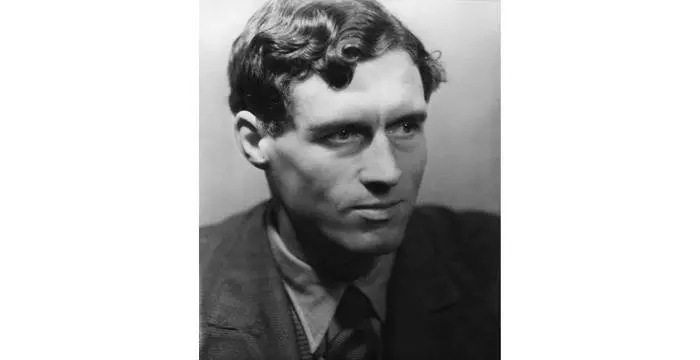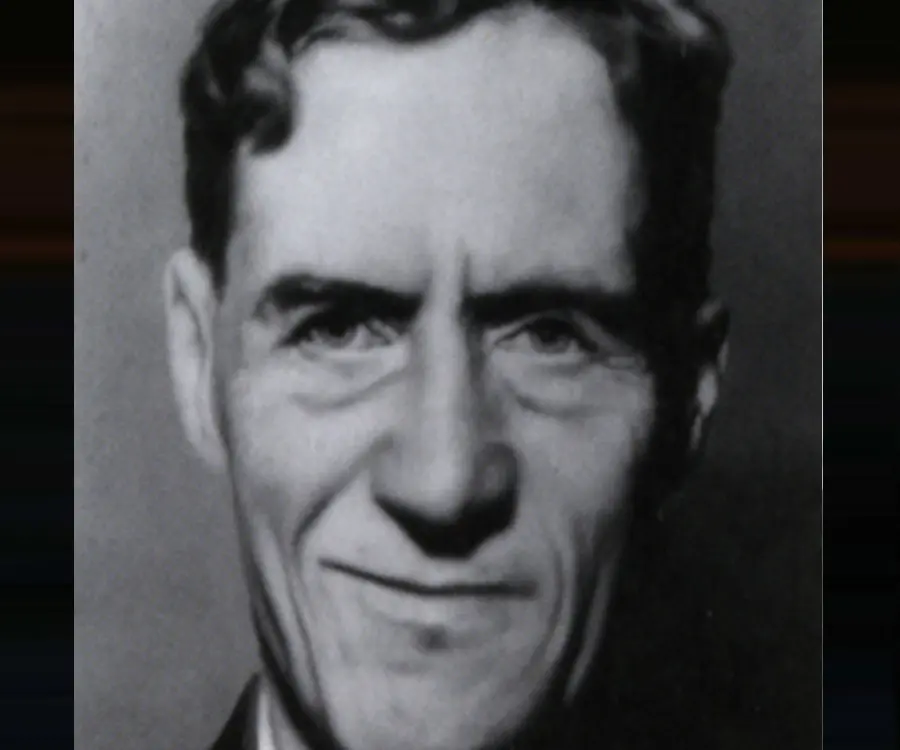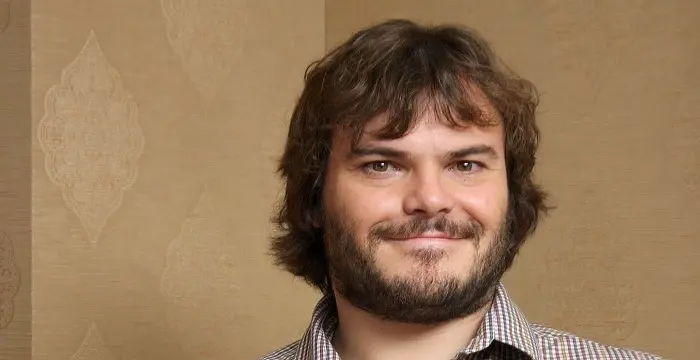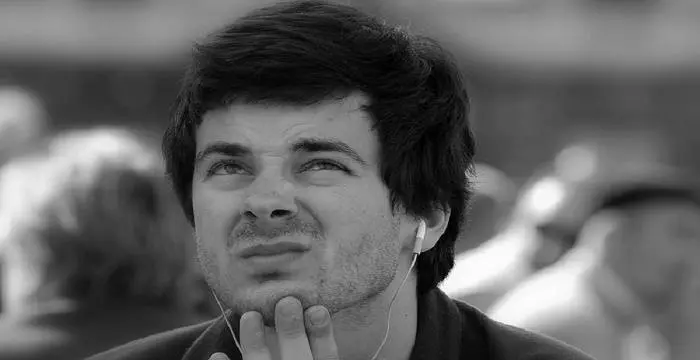
Patrick Blackett - Scientists, Career and Childhood
Patrick Blackett's Personal Details
Patrick Blackett was an English physicist who received the Noble Prize in Physics in 1948
| Information | Detail |
|---|---|
| Birthday | November 18, 1897 |
| Died on | July 13, 1974 |
| Nationality | British |
| Famous | Atheists, Scientists, Physicists |
| Spouses | Costanza Bayon |
| Siblings | Marion |
| Known as | Patrick Maynard Stuart Blackett, Baron Blackett |
| Childrens | Giovanna, Nichols |
| Universities |
|
| Birth Place | London, England |
| Gender | Male |
| Father | Arthur Stuart Blackett |
| Mother | Caroline Maynard |
| Sun Sign | Scorpio |
| Born in | London, England |
| Famous as | Physicist |
| Died at Age | 76 |
// Famous Physicists
Henry Cavendish
Henry Cavendish was a theoretical chemist and physicist, renowned for discovery of hydrogen and calculation of the mass of earth. To know more about his childhood, profile, timeline and career read on
Walter Kohn
Nobel Laureate Walter Kohn was an Austrian-born American theoretical chemist and physicist. Check out this biography to know about his childhood, life, achievements, works & timeline.
Nikola Tesla
Nikola Tesla was a Serbian-American inventor, best known for his development of alternating current electrical systems. This biography of Nikola Tesla provides detailed information about his childhood, life, achievements, works & timeline.
Patrick Blackett's photo
Who is Patrick Blackett?
Patrick Blackett was an English physicist who received the Noble Prize in Physics in 1948 for his innovative modification of the ‘cloud chamber’ and the discovery of electrons and positrons which were produced in pairs during cosmic radiation. The ‘cloud chamber’ had been invented by his senior colleague C. T. R. Wilson for taking photographs of ionized particles. Blackett incorporated a ‘Geiger counter’ into the contraption which could sense the passage of an ionized particle through the chamber and would immediately trigger the process of taking a photograph of the moving particle. He also undertook experiments on geomagnetic fields and proved the presence of ‘paleomagnetism’ in sedimentary rocks which led to the continental drift. His theory was accepted by the scientific world which had been debating on the reasons for the continental drift for a long time. He is called the ‘father of operational research’. He played an influential role as a scientific adviser in many departments of the British government which involved the development of policies on technology, scientific education and the manufacture of nuclear armaments. He also advised the British government on its technical aid to India and was a friend of Indian physicist Homi Bhaba who was the scientific advisor of the Indian government.
// Famous Scientists
Juliane Koepcke
Juliane Koepcke is a German-Peruvian biologist, who was the lone survivor among the 92 passengers and crew of the ill-fated LANSA Flight 508 that crashed in the Peruvian rainforest on 24 December 1971. Know more about her life in this biography.
Henry Cavendish
Henry Cavendish was a theoretical chemist and physicist, renowned for discovery of hydrogen and calculation of the mass of earth. To know more about his childhood, profile, timeline and career read on
Konstantin Tsiolkovsky
Konstantin Tsiolkovsky was a Russian rocket scientist and a pioneer of astronautics. This biography provides detailed information about his childhood, family, personal life, career, achievements, etc.
Childhood & Early Life
Patrick Blackett was born as Patrick Maynard Stuart Blackett in Kensington, London, UK on November 18, 1897. His father was a stockbroker named Arthur Stuart Blackett and his mother was Caroline Maynard. He had a younger sister named Marion.
He attended a military preparatory school called the ‘Osborne Royal Naval College’ in 1910 from where he matriculated in 1912 and then joined the ‘Dartmouth Royal Naval College’.
He joined the Royal Navy and saw action in the ‘Battle of Falklands’ in 1914 and in the ‘Battle of Jutland’ in 1916 during the First World War.
He joined the ‘Magdalene College’ under the ‘Cambridge University’ in January, 1919, to complete his studies which had been interrupted in 1914. He resigned from the Navy in the same year.
He received his undergraduate degree from the ‘Magdalene College’ in 1921 and joined as a research post-graduate student the ‘Cavendish Laboratory’ under the ‘Cambridge University’ whose director was physicist Ernest Rutherford.
Career
Patrick Blackett became famous in 1924 at the age of twenty-seven for being able to take photographs of the ionized particles inside the ‘cloud chamber’ just when the expansion of the content inside it expanded with the help of a trigger invented by him.
From 1924 to 1925 he worked with James Franck at Gottingen, Germany.
He redesigned the ‘cloud chamber’ with the help of an Italian physicist named Giuseppe Occhialini in 1932 by adding a ‘Geiger counter’ which would trigger the photography mechanism whenever a particle passed through it for which he would win the Nobel Prize in Physics later.
He moved to the ‘Birkbeck College’ in London in 1933 as a Professor of Physics where he studied subatomic particles extensively and narrowly missed the credit for discovering ‘positron’.
In 1934 he joined the ‘Aeronautical Research Committee’ of the government as an adviser, and then the ‘Committee for the Scientific Survey of Air Defense (CSSAD)’ of the Air Ministry. While there he suggested the concept of field research or ‘operational research’ for effectively integrating radar technology with combat operations.
He became the Chairman of the Physics department of ‘Manchester University’ in 1937.
At the start of the Second World War in 1939, he joined the ‘Royal Aircraft Establishment’ as a designer for bombsights.
During the ‘Battle of Britain’ in 1940, he and a group of scientists nicknamed the ‘Blackett’s Circus’ joined the ‘Anti-Aircraft Command’ of the British Army and helped in improving the performance of the mechanical assemblies used to aim the anti-aircraft guns at enemy bombers.
He was transferred to the ‘Royal Air Force Coastal Command’ in 1941 and studied ways to reduce the German U-boat menace.
During that summer he wrote a paper on ‘Scientists at the Operational Level’ which defined the concept of Operational Research (OR)’.
In December 1941 he was given the post of ‘Chief Advisor on Operational Research’ and later became the ‘Director of Naval Operational Research’ at the admiralty.
He was a member of the ‘Barlow Committee’ from 1945 to 1946, a member of the ‘Department of Scientific and Industrial Research’ from 1956 to 1960 and a member of the ‘National Research and Development Corporation’ from 1949 to 1964.
In 1947 he introduced the theory of ‘paleomagnetism’ which helped to prove the occurrence of ‘continental drift’.
In 1948 he also became famous for his book on the effects of atomic energy on military and political decisions.
He served as the Dean of the ‘Faculty of Science’ from 1948 to 1950 and the pro-vice chancellor of ‘Manchester University’ from 1950 to 1952.
He joined the ‘Imperial College of Science and Technology’ in London in 1954 and turned his attention to geomagnetism.
He was the dean of the ‘Royal College of Science’ from 1955 to 1960 and its pro-rector from 1961 to 1964.
He played a major role in the creation of the British government’s ‘Ministry of Technology’ in 1964 as its chief scientific adviser.
He served as the President of the ‘Royal Society’ in London from 1965 to 1970.
He retired from the ‘Imperial College’ in September 1965.
Major Works
Patrick Blackett published his book ‘The Ejection of Protons from Nitrogen Nuclei, photographed by the Wilson method’ in 1925, ‘Some Photographs of the Tracks of Penetrating Radiation’ in 1933 and ‘The Craft of Experimental Physics’ also in 1933.
He brought out the book ‘Military and Political Consequences of Atomic Energy’ in 1948.
His book ‘A Negative Experiment Relating to Magnetism and the Earth’s Rotation’ was published in 1952 while the book ‘Comparison of Ancient Climates with the Ancient Latitudes Deduced from Rock Magnetic Data’ came out in 1961.
Awards & Achievements
Patrick Blackett was awarded the ‘Royal Medal’ by the ‘Royal Society’ in 1940 and the ‘American Medal for Merit’ in 1946.
He received the Noble Prize in Physics in 1948.
Though Patrick Blackett did not get his doctorate, he held twenty honorary degrees and memberships of academic and other institutions from eleven countries which included the Soviet Union and China.
He was given the ‘Order of Companions of Honor’ in 1956 and the ‘Order of Merit’ in 1967.
He was granted a life peerage in 1969 and took the title of ‘Baron Blackett of Chelsea’.
Personal Life & Legacy
He married Costanza Bayon, a modern language student, in March, 1924. He had a daughter named Giovanna and a son named Nichols from this marriage.
Patrick Blackett died in London, UK on July 13, 1974.
A crater on the moon is named after him and the house where he lived from 1953 to 1969 was given an ‘English Heritage Blue Plaque’.
Trivia
Patrick Blackett advocated that only scientific education could reduce the gap between the world’s rich and the poor.
// Famous Atheists
Morgan Freeman
Morgan Freeman is an Academy Award winning actor known for his work in movies like ‘Street Smart’, ‘Driving Miss Daisy’ and ‘Million Dollar Baby’. This biography provides detailed information about his childhood, life, achievements, works & timeline.
Robert Smith
Robert Smith is an English musician and the lead singer of the British rock band, ‘The Cure.’ This biography of Robert Smith gives detailed information on his profile, childhood, life and timeline.
Jack Black
Jack Black is a renowned American actor-producer and voice artist. Explore this biography to learn more about his profile, childhood, career and timeline
Patrick Blackett's awards
| Year | Name | Award |
|---|---|---|
Other | ||
| 0 | FRS (1933) | |
| 0 | Royal Medal (1940) | |
| 0 | Nobel Prize in Physics (1948) | |
| 0 | Copley Medal (1956) | |
Patrick Blackett biography timelines
- // 18th Nov 1897Patrick Blackett was born as Patrick Maynard Stuart Blackett in Kensington, London, UK on November 18, 1897. His father was a stockbroker named Arthur Stuart Blackett and his mother was Caroline Maynard. He had a younger sister named Marion.
- // 1910 To 1912He attended a military preparatory school called the ‘Osborne Royal Naval College’ in 1910 from where he matriculated in 1912 and then joined the ‘Dartmouth Royal Naval College’.
- // 1914 To 1916He joined the Royal Navy and saw action in the ‘Battle of Falklands’ in 1914 and in the ‘Battle of Jutland’ in 1916 during the First World War.
- // 1914 To 1919He joined the ‘Magdalene College’ under the ‘Cambridge University’ in January, 1919, to complete his studies which had been interrupted in 1914. He resigned from the Navy in the same year.
- // 1921He received his undergraduate degree from the ‘Magdalene College’ in 1921 and joined as a research post-graduate student the ‘Cavendish Laboratory’ under the ‘Cambridge University’ whose director was physicist Ernest Rutherford.
- // 1924Patrick Blackett became famous in 1924 at the age of twenty-seven for being able to take photographs of the ionized particles inside the ‘cloud chamber’ just when the expansion of the content inside it expanded with the help of a trigger invented by him.
- // 1924 To 1925From 1924 to 1925 he worked with James Franck at Gottingen, Germany.
- // 1924He married Costanza Bayon, a modern language student, in March, 1924. He had a daughter named Giovanna and a son named Nichols from this marriage.
- // 1932He redesigned the ‘cloud chamber’ with the help of an Italian physicist named Giuseppe Occhialini in 1932 by adding a ‘Geiger counter’ which would trigger the photography mechanism whenever a particle passed through it for which he would win the Nobel Prize in Physics later.
- // 1933He moved to the ‘Birkbeck College’ in London in 1933 as a Professor of Physics where he studied subatomic particles extensively and narrowly missed the credit for discovering ‘positron’.
- // 1934In 1934 he joined the ‘Aeronautical Research Committee’ of the government as an adviser, and then the ‘Committee for the Scientific Survey of Air Defense (CSSAD)’ of the Air Ministry. While there he suggested the concept of field research or ‘operational research’ for effectively integrating radar technology with combat operations.
- // 1937He became the Chairman of the Physics department of ‘Manchester University’ in 1937.
- // 1939At the start of the Second World War in 1939, he joined the ‘Royal Aircraft Establishment’ as a designer for bombsights.
- // 1940During the ‘Battle of Britain’ in 1940, he and a group of scientists nicknamed the ‘Blackett’s Circus’ joined the ‘Anti-Aircraft Command’ of the British Army and helped in improving the performance of the mechanical assemblies used to aim the anti-aircraft guns at enemy bombers.
- // 1940 To 1946Patrick Blackett was awarded the ‘Royal Medal’ by the ‘Royal Society’ in 1940 and the ‘American Medal for Merit’ in 1946.
- // 1941He was transferred to the ‘Royal Air Force Coastal Command’ in 1941 and studied ways to reduce the German U-boat menace.
- // Dec 1941In December 1941 he was given the post of ‘Chief Advisor on Operational Research’ and later became the ‘Director of Naval Operational Research’ at the admiralty.
- // 1947In 1947 he introduced the theory of ‘paleomagnetism’ which helped to prove the occurrence of ‘continental drift’.
- // 1948In 1948 he also became famous for his book on the effects of atomic energy on military and political decisions.
- // 1948He brought out the book ‘Military and Political Consequences of Atomic Energy’ in 1948.
- // 1948He received the Noble Prize in Physics in 1948.
- // 1952 To 1961His book ‘A Negative Experiment Relating to Magnetism and the Earth’s Rotation’ was published in 1952 while the book ‘Comparison of Ancient Climates with the Ancient Latitudes Deduced from Rock Magnetic Data’ came out in 1961.
- // 1953 To 1969A crater on the moon is named after him and the house where he lived from 1953 to 1969 was given an ‘English Heritage Blue Plaque’.
- // 1954He joined the ‘Imperial College of Science and Technology’ in London in 1954 and turned his attention to geomagnetism.
- // 1956 To 1967He was given the ‘Order of Companions of Honor’ in 1956 and the ‘Order of Merit’ in 1967.
- // 1964He played a major role in the creation of the British government’s ‘Ministry of Technology’ in 1964 as its chief scientific adviser.
- // 1965 To 1970He served as the President of the ‘Royal Society’ in London from 1965 to 1970.
- // Sep 1965He retired from the ‘Imperial College’ in September 1965.
- // 1969He was granted a life peerage in 1969 and took the title of ‘Baron Blackett of Chelsea’.
- // 13th Jul 1974Patrick Blackett died in London, UK on July 13, 1974.
// Famous British peoples
Wentworth Miller
Wentworth Miller is an American actor and screenwriter who achieved recognition for his role in the TV series ‘Prison Break’.
Sophie Reade
Sophie Victoria Reade is a British model and reality show star. Let’s take a look at her family and personal life, including her age, birthday, boyfriends, and some interesting facts.
Josh Temple
Check out all that you wanted to know about Josh Temple (Slogoman), the famous British YouTube Personality; his birthday, his family and personal life, his girlfriends, fun trivia facts and more.
Yammy Xox
Check out all that you wanted to know about Yammy Xox, the famous British YouTube Personality; her birthday, her family and personal life, her boyfriends, fun trivia facts and more.
Grian
Grian is an English YouTube gamer and social media influencer. Check out this biography to know about his birthday, childhood, family life, achievements and fun facts about him.
Benjamin Atkinson
Benjamin Atkinson is the son of the world-renowned British actor and comedian, Rowan Atkinson. Check out this biography to know about his childhood, family, personal life, including his age, birthday, etc.
Patrick Blackett's FAQ
What is Patrick Blackett birthday?
Patrick Blackett was born at 1897-11-18
When was Patrick Blackett died?
Patrick Blackett was died at 1974-07-13
Where was Patrick Blackett died?
Patrick Blackett was died in London, England
Which age was Patrick Blackett died?
Patrick Blackett was died at age 76
Where is Patrick Blackett's birth place?
Patrick Blackett was born in London, England
What is Patrick Blackett nationalities?
Patrick Blackett's nationalities is British
Who is Patrick Blackett spouses?
Patrick Blackett's spouses is Costanza Bayon
Who is Patrick Blackett siblings?
Patrick Blackett's siblings is Marion
Who is Patrick Blackett childrens?
Patrick Blackett's childrens is Giovanna, Nichols
What was Patrick Blackett universities?
Patrick Blackett studied at Osborne Naval College, University of Cambridge
Who is Patrick Blackett's father?
Patrick Blackett's father is Arthur Stuart Blackett
Who is Patrick Blackett's mother?
Patrick Blackett's mother is Caroline Maynard
What is Patrick Blackett's sun sign?
Patrick Blackett is Scorpio
How famous is Patrick Blackett?
Patrick Blackett is famouse as Physicist















